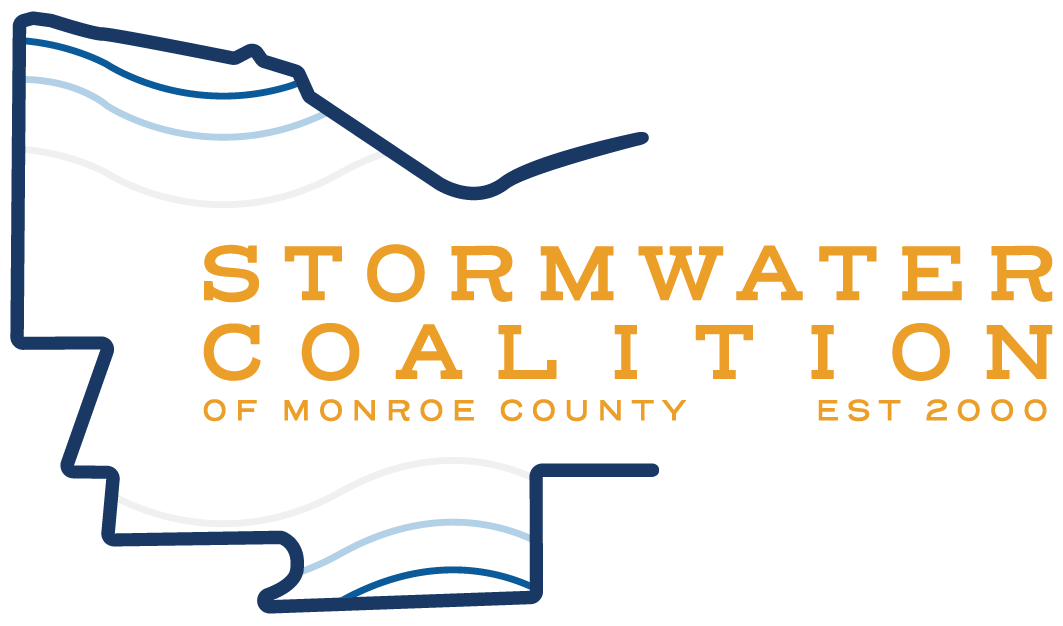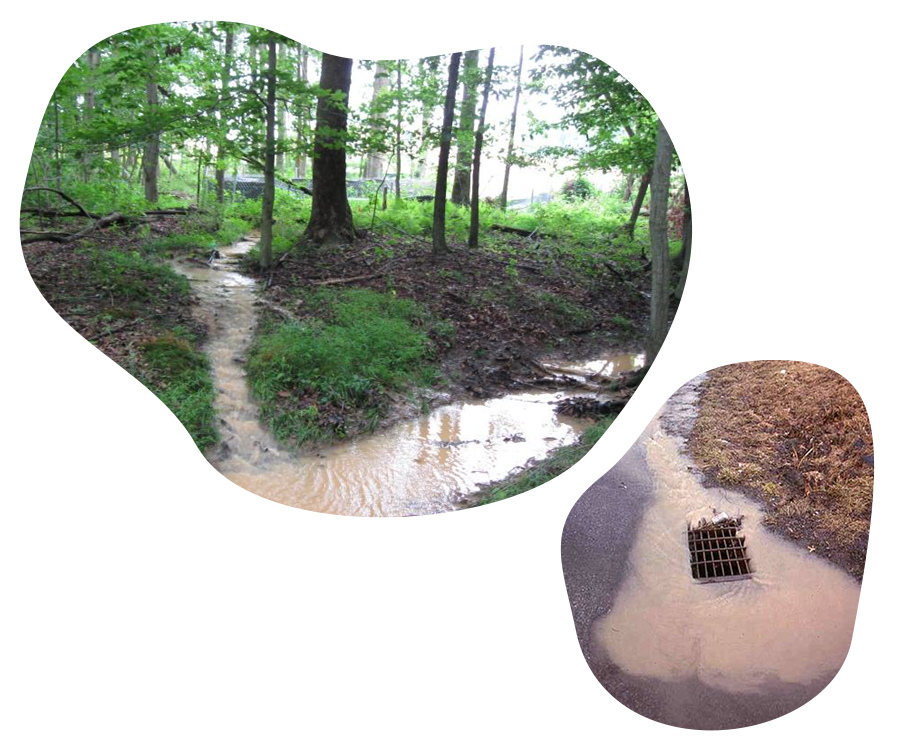Stormwater 101
What is Stormwater ?
Stormwater runoff is generated from rain and snowmelt events that flow over land or impervious surfaces, such as paved streets, parking lots, and building rooftops, and does not soak into the ground. The runoff picks up pollutants like trash, chemicals, oils, and dirt/sediment that can harm our rivers, streams, lakes, and coastal waters. This type of pollution is significant because, aside from certain areas in the City of Rochester, stormwater runoff is not treated at a wastewater treatment plant and flows to our local waterways.
Understanding Where Storm Water Goes
To understand how water becomes polluted, we need to understand the watershed concept. Simply put, a watershed is the area of land that drains into a particular waterbody. For example, the Genesee River watershed is 2,480 square miles in size and extends all the way to Pennsylvania. Rain and melting snow seeps into the ground or drains downslope through a network of channels and streams, and ultimately reaches the Genesee River and Lake Ontario. If you've ever used a funnel, you get the idea of how a watershed works.
Stormwater & Sanitary Sewer Systems Differences
In most of Monroe County, the storm sewer system is a separate system of pipes/ditches and is not part of the sanitary sewer system that transports sewage from our homes to the water resource recovery facility. This is a very important concept to understand because water that enters the storm sewer is transported to the nearest waterway, and ultimately to Lake Ontario, without being treated at a sewage treatment plant.
The City of Rochester is an exception. In certain areas of the City, stormwater and sanitary waste flow in a combined system. That is, both stormwater and sewage are transported through the same system of pipes and are treated at the Frank E. Van Lare Water Resource Recovery Facility.
Regardless of where you live, it’s important to remember Only Rain Down the Drain!
Stormwater’s Effect on Water Quality
What goes into storm drains goes into our waterways
An unintended consequence of the stormwater system is that pollutants such as automotive fluids, fertilizers and pesticides, bacteria, sediments, litter, and pet waste are quickly transported from parking lots, roads, and driveways to the nearest waterway. Stormwater pollution results from many of our everyday activities such as how we care for and maintain our cars, lawns, and pets. The good news is that these are sources of pollution that we can do something about TODAY!
When we think about water pollution, many of us think of industrial and municipal wastewater. The sources of these pollutants have made major improvements to their processes and have been regulated for many years. As a result, stormwater is now the most significant source of pollution to many of our local waterways.
Local Water Quality
Waterway Conditions
In general, water quality in the Genesee River, Lake Ontario, and other local waterways has greatly improved since the 1970s because of major investments in infrastructure, government regulations, and other efforts.
Determining Water Quality
New York State, many local municipalities, and research institutions monitor and study local water quality conditions. In our region, Monroe County conducts regular monitoring of water quality. The New York State Department of Environmental Conservation (DEC) publishes a "Priority Waterbodies List" that documents polluted waterways in the State. This list and many associated documents can be viewed on the DEC website.


